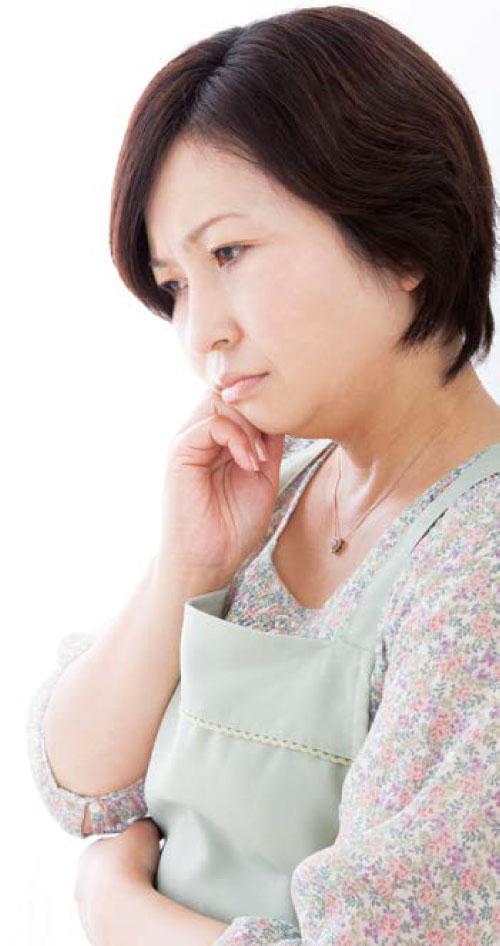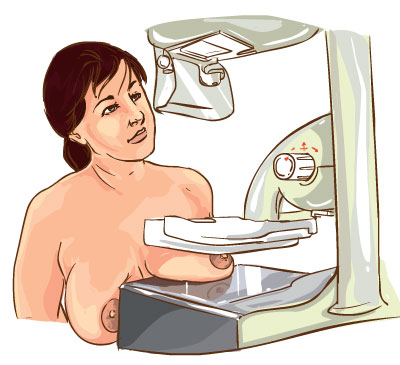According to the 5th Malaysia Population and Family Survey, 2014 only 27.3% of married women aged 40-59 years had ever done a mammogram. Out of that, more than two-third had their screening sometime within the last 3 years. It’s clear that the number of women going for mammogram is far too low and the majority of those who do, do not screen frequently enough. There is an urgent need for more women to come forward and go for annual mammogram screening.
What is a mammogram?
A mammogram is an x-ray of the breast. It is used to detect breast cancer early, even before lumps can be felt.
Do I need a mammogram?
Women over 40 are encouraged to go for a mammogram, this is when the risk of acquiring breast cancer starts to increase.
Why not do it earlier than 40?
A mammogram for younger women is not advised because their breast tissue is still dense. If there is a lump, the mammogram will not be able to differentiate between breast or cancer tissue.
In cases where you are at risk but have dense breast tissue, a digital mammogram should be considered. The digital images created are better at finding breast cancer cells.
Where can I go for a mammogram?
Public hospitals will conduct a mammogram for free, if you are referred to by a doctor who has reason to believe you might be at risk of breast cancer. If you want to do a mammogram without a referral, you can do so at a private hospital.
I’m still young, am I at risk?
If you have family history of breast cancer, are overweight or obese, do not exercise regularly and have poor dietary practices, you may be more susceptible. But the fact that you are a woman already puts you at risk. Hence, all women should screen for breast cancer regardless.
Lifestyle Tips To Prevent Breast Cancer
Exercise regularly.
Sixty minutes of moderate-intensity exercise most days of the week is recommended to maintain a healthy weight. Physical activity fortifies the immune system and helps reduce oestrogen levels (high amounts of oestrogen in the blood may increase a woman’s breast cancer risk).
Eat a balance diet.
Diet high in fat increases the risk for breast cancer because fat facilitates the production of oestrogen. Increase your intake of dietary fibre from sources such as vegetables, whole grains and fruits. Fibre helps lower cholesterol and eliminate fat.
Conduct breast self-examination (BSE)
Once every month starting from 18 years-old onwards. BSE is a useful and essential screening strategy, especially when used in combination with regular physical exams by a doctor and mammography.
What happens during a mammogram?
- You’ll stand & your breast will be compressed between two plates to flatten and reduce the thickness of the breast.
- This gives a better picture and allows less radiation to be used.
- For most women, this part of the procedure feels mildly uncomfortable, but it lasts for just a few seconds.
- Both breasts are screened but done one at a time.
- From start to finish, the entire procedure will take less than 30 minutes.
Do men/husbands have a role to play in preventing breast cancer?
Yes, they do. In fact, their role is paramount because it is their duty to protect their mother, wife, sister and certainly all women from harm. Men should empower themselves with knowledge in breast cancer prevention, so that they can advocate for breast cancer screening in their family. The support and encouragement of a husband, father, son or brother could be the nudge some women need to go for screening.
The same responsibility and concern a man has for his wife’s wellbeing during pregnancy, labour and delivery should be mirrored in all aspects of her health, including breast health.
Strategy for men to encourage the women in their lives to go for screening/mammogram:
- Promote the importance of early screening, going for clinical breast exams and periodically conducting breast self-examination at home.
- Give a mammogram voucher as a gift for a birthday or anniversary.
- Bring them along to events that have free mammogram or breast screening (e.g. LPPKN or MOH events).
- Arrange for a friend or close family member of hers to do the test together.
There’s no cure for cancer, so what’s the point of a mammogram?
If cancer is detected early, your chances of survival are quite high following surgery, radiation therapy or other forms of treatment. Even if you detect it at its later stages, you aren’t beyond hope or help; breast cancer can be treated and controlled for a fairly long time.
However, it is important to note that late stage treatment has a more profound emotional and financial impact to the patient and his/her family. Mammograms cost between RM150-350, compare that to the cost of late stage treatment, which could stem to hundreds of thousands of ringgit in medical cost, rehabilitation, transportation and drugs.
Additionally, you might not be able to go to work, which means less income for the family. Not only will your spouse need to take care of you (and the kids), he must also provide for the family. The overwhelming stress may lead to depression, separation and overall depreciation in quality of life.
An educational collaboration with National Population and Family Development Board Malaysia.








Comments